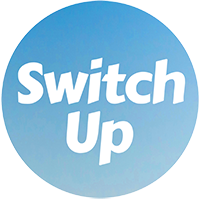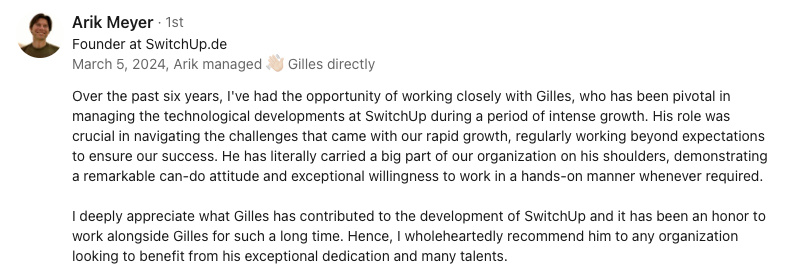Abstract:
The article examines how the drive to optimize—common among those with tech and data backgrounds—can quietly permeate everyday life, turning routines and even self-care practices like journaling into productivity projects that prioritize constant improvement over presence and satisfaction. It highlights how this upgrade mindset, often reinforced by habitual language (e.g., “fix,” “maximize,” “track”), can lead to restlessness, perfectionism, and a loss of joy in activities once meant to provide relief. Through distinctive examples, such as tracking morning routines with spreadsheets even after leaving high-pressure jobs, and turning gratitude journaling into a competitive scoreboard, the article illustrates how ingrained optimization habits can become. To counter this, it offers practical strategies: recognizing optimization patterns, adopting softer prompts for self-reflection, and embracing routines centered on self-compassion, gratitude, mindfulness, and “enoughness.” Personal anecdotes, like the author’s realization of quiet growth during international moves and stories from minimalist communities, reinforce the message that letting go of relentless self-upgrading can foster deeper satisfaction, creativity, and well-being. Ultimately, the article encourages redefining progress as presence and acceptance rather than perpetual improvement, showing that genuine fulfillment often arises not from chasing upgrades but from valuing what is already working and allowing space for stillness.
Ever notice how the drive to make things better sneaks into the quiet of your morning coffee, the scribbles in your journal, and even the way you try to unwind after a long day? For many with a tech or data background, optimizing becomes second nature. Before you know it, you’re timing your breakfast, analyzing your moods, and even trying to “improve” how you relax. But all this chasing can leave you feeling restless, like you’re never quite allowed to just be.
Here, we'll look at how constant optimization quietly creeps in, turning gentle routines into new competitions and making it hard to appreciate things as they are. We’ll see how the upgrade mindset shapes self-talk, why journaling can become another task to optimize, and how stillness starts to feel a bit awkward if you’re used to chasing progress.
You’ll find practical ways to spot these habits, softer prompts for balanced self-reflection, and routines that help shift focus from always improving toward genuine appreciation. We’ll look at how to handle the uneasy feeling that can come with stepping away from metrics and share ideas for finding value in presence, not just perfection. Turns out, learning to accept “enough” leads to a deeper kind of satisfaction, even for those who once felt best on the move.
If you’ve wondered whether growth could mean something gentler than chasing upgrades, keep reading.
The hidden cost of always upgrading
Optimization as habit
Among tech folks, it's common to joke about always needing to make things work better. Working in data-driven, high-pressure roles teaches you to track, tweak, and improve until it’s part of who you are. Even after leaving those environments, the urge stays—like a notification you can't quite quit. Many people in tech report feeling this on and off for years. This mindset shapes your habits and even how you see yourself.
The upgrade mindset
Constant upgrades, whether new software or personal records, can sink in deep. Even after a career switch or cutting back to simple living, the itch to improve things doesn’t go away. Imagine leaving a demanding job but still tracking your morning routines with spreadsheets to spot “room for improvement.” This sense of identity means upgrading shows up in every corner of life, not just at work.
Stillness feels uncomfortable
That keen eye for improvement goes beyond work. It shapes how mornings are set up or how progress is scored. The result? A quiet, ongoing restlessness—a feeling that if you’re not moving forward, you’re slipping back. Sometimes even self-care feels like another thing to tick off. Instead of pausing, you may notice yourself turning downtime into another productivity project.
When self-reflection turns into another upgrade
Journaling as another project
Journaling might sound peaceful, but for those with tech habits, it soon becomes a project: color-coded charts, checklists, reviews. Instead of a pause, it turns into performance. You might even catch yourself judging if your gratitude pages are “efficient enough.” When that happens, the feeling of journaling shifts from calming to competitive.
The journal as scoreboard
These habits can feed overthinking and perfectionism. The journal becomes a scoreboard, everything measured against invisible goals. It can take the fun out of the process, making self-reflection feel like running a never-ending race with the finish line always just out of reach.
Losing the joy, finding your way back
Trying to “do it right” or “see progress” can drain journaling of its benefits, making it feel like a chore. Noticing when this happens is the first step back. A kinder approach brings relief, letting journaling become helpful again instead of just another metric.
Recognizing subtle patterns of optimization
Spotting the language of upgrading
Words matter. Some, like fix, hack, maximize, track, measure, upgrade, slip into your thinking and writing. They frame everything as a system to improve instead of moments to enjoy. If you often wonder, “How can I make this better?” or “Is there a more efficient way?”, that’s a sign the optimizer in you is hard at work. Common words in this category are:
- fix
- hack
- maximize
- track
- measure
- upgrade
Hearing yourself use these words can be a signal. Language shapes what you aim for.
When this shows up in self-talk or journaling, it usually shows a focus on results and measurable progress. For example, you might write, “Today I’ll optimize my morning routine and track how productive I am.” This keeps the mind whirring, always on to the next thing, rarely stopping to just be.
Noticing these patterns is the first step to change. By catching how often this language pops up, you can start questioning if it really helps or just keeps you on a hamster wheel. Once you see the cycle, some thoughtful prompts can help uncover what’s driving it and open the door to softer self-reflection.
Journaling prompts for self-awareness
Targeted prompts can bring hidden habits to light. Questions like:
- “How am I making today another project?”
- “What am I trying to improve right now?”
- “What words pop up most when I talk about my goals?”
- “Am I aiming to upgrade or to truly experience today?”
- “Describe a recent setback and what you learned from it.”
For fans of structure, self-assessment tools may help—if the goal is insight, not more points on a scoreboard. Assessment tools, like scales for perfectionism or burnout, can help map out where habits show up. Used as mirrors, not as contests, they encourage awareness over achievement.
Regular reflection like this helps separate healthy growth from anxious upgrading. With more self-awareness, it becomes easier to see what real growth looks like, and to build contentment into daily routines.
Shifting from upgrading to appreciating
Self-compassion and gratitude routines
Self-compassion journaling is a gentle way to quiet perfectionism. Rather than listing what to fix, you might ask, “How would I support a friend in this moment?” This simple shift can turn self-criticism into kindness, especially during rough patches. Practicing like this often quiets the urge to optimize every weakness and allows space for acceptance.
Gratitude journaling can also redirect your focus from what’s missing to what’s already going well. Noting even small achievements or daily qualities helps you feel grounded in what you already have and dampens the need to keep chasing improvement. Some gratitude prompts:
- What abilities or qualities did I use today that helped me or someone else?
- What is one thing I accomplished this week that I feel satisfied about?
- Who made my day easier, and how did I show appreciation?
A strengths-based approach lifts confidence and helps you see the value in what you already bring. Asking, “When did my strengths help me today?” points attention to steady good things, rather than new upgrades. This way, growth feels less about constant change and more about self-trust and stability.
Mindfulness and savoring
Mindfulness-based journaling keeps your focus on the here and now, helping you notice and accept what’s happening. A question like, “What am I experiencing right now, without judging it?” invites calm and curiosity instead of striving.
Savoring exercises add another layer, helping your mind enjoy small wins, even a peaceful coffee or a laugh. A simple prompt: “Describe a pleasant moment from today—what did you see, hear, feel?”
Prompts about sufficiency, such as “Where am I already enough?” or “What would steady feel like today?” gently shift focus to appreciating what’s held steady, instead of pushing for more. These routines can, over time, make appreciation and acceptance feel natural.
Balancing the urge to achieve with the need for rest is not easy, especially when your career has always rewarded results. But learning to pause and notice what’s already working can be a quiet act of courage.
Gentle self-reflection routines
Practices to pause striving
A gratitude log that highlights what stays steady—not what gets better—helps you feel grounded in what you already have. Writing things like, “I appreciated my patience today, just as it was,” shifts the focus from growth to noticing what’s solid and present.
Maintenance logs celebrate stability. Rather than tracking improvements, you’d note what you kept up, like “Kept my morning walk routine the same.” If you’re used to always upgrading, this can actually feel pretty good.
Non-action days—putting aside time without improvement tasks—also help disrupt relentless striving. Looking back on those days might bring relief, or sometimes new ideas, showing that breaks are part of progress too.
Mindfulness prompts, like “What can I accept about myself today, just as I am?” support the idea that rest is part of growth. It can take time to get used to resting, but it’s a natural step toward better balance.
I found that tending to my small garden in Lisbon, without any plan to improve yields or track progress, brought a kind of peace I rarely found in spreadsheets. The smell of the earth, the feel of the sun—these small things reminded me that not everything needs to be measured to have value.
Managing optimization withdrawal
Stepping back from tracking and upgrading can lead to anxiety, irritation, or a bit of emptiness, especially if you’ve been at it for years. This is common, not a flaw.
Gentle routines, like mindfulness meditation, writing by hand, and spending time in nature, help ease the transition. Research shows these activities help bring awareness to the present and offer relief from chasing metrics. Over time, patience and presence can swap out old anxiety for a calmer way of being. Letting go of numbers isn’t quitting growth—it’s creating space for rest and satisfaction.
Letting go of metrics and embracing stillness
No numbers journaling
Narrative journaling focuses on the process—what you felt, learned, or noticed—rather than numbers. Instead of logging productivity, you’d ask, “What surprised me today, and why?” This removes some of the pressure and invites more honest, helpful reflection.
Writing as a story, not as a scorecard, helps you work through feelings and build resilience. For example, recounting a tricky conversation—what you felt, how it went, what you learned—can give more insight without needing a number attached. Here growth is about experience, not measurements.
Using self-compassion, writing as though supporting a friend, can break the old habit of self-judgment or comparing with others. In this way, quiet moments can turn into new insight and even creativity. Growth becomes a process you can enjoy, not just a finish line to chase.
Valuing stillness
Stillness may feel odd at first, but it can actually grow well-being, creativity, and emotional balance. Taking breaks pays off, even if your brain says “nothing’s happening.” Sometimes, the best ideas show up after a walk or while staring out the window.
Sometimes, it is not so easy to just stop chasing numbers, you know? For those who need to achieve, the worry that you’re “stuck” can creep in. But reframing stillness as fertile ground for ideas and understanding helps soften those fears. Simple practices like mindful breathing or gentle self-questioning can make stillness more comfortable and rewarding. With this mindset, it’s easier to accept presence as a meaningful kind of progress.
A new definition of progress
Progress beyond upgrades
Qualitative reflection prioritizes presence, personal values, and self-acceptance over numbers. Many experts agree that progress is more about lining up your days with what truly matters than just counting wins. Looking at growth this way often leads to more lasting satisfaction.
Letting go of constant upgrades makes room for deeper growth. Open journaling—writing what mattered or what changed for you—builds resilience and helps spot a sense of purpose. Try, “What truly mattered to me today, and why?”
To address imposter syndrome or self-doubt, you might try a prompt from the 'Win-Log' habit: “What small win did I achieve today, even if it felt minor?” Over time, collecting these small wins can help you see your progress more clearly, especially on days when self-doubt is loud.
Another helpful prompt: “When did I feel like an imposter today, and what evidence do I have that I belonged?” This kind of reflection can gently challenge negative self-talk and build confidence.
Satisfaction and growth mix better when the focus shifts from always improving to accepting slow, natural change. Moving from Beijing to Berlin to Lisbon, I found that most growth happens quietly, in the background, often when you’re not forcing it. Some of my biggest changes showed up when I stopped chasing, and instead started noticing what was already working, flaws and all.
Stories of relief and enoughness
People in minimalist circles often feel lighter after letting go of upgrades. Some say that clearing clutter brought peace, others mention finding joy in simple routines or better relationships rather than new achievements. The main feeling is relief and mental space.
On podcast and blog communities like Slow Home and Zen Habits, folks talk about better mental health and fuller daily experiences after they learned to settle for “enough.” It seems that real well-being grows when you make peace with where you are, instead of chasing more all the time.
These stories suggest that deep satisfaction comes not from endless improvement, but from learning to accept and even enjoy the present.
Trying to optimize every area of life can slip in quietly, even making self-care another thing to fix. But maybe, in the end, the real progress is learning to trust that what you have, and who you are, is already enough.














